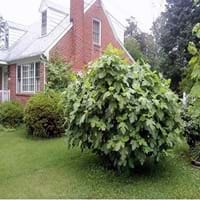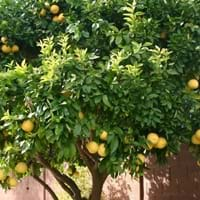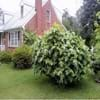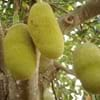Life Span
Perennial
Perennial
Origin
Mediterranean, Southeastern Asia
South Asia, Southeast Asia
Types
Texas Everbearing Fig, Celeste Fig, Black Mission Fig
Not Available
Habitat
Clay soil areas, Sandy areas, Well Drained
Mediterranean region
USDA Hardiness Zone
6-10
8-10
AHS Heat Zone
9-6
Not Available
Sunset Zone
H1, H2, 4, 5, 6, 7, 8, 9, 12, 13, 14, 15, 16, 17, 18, 19, 20, 21, 22, 23, 24
Not Available
Habit
Upright/Erect
Spreading
Flower Color Modifier
Bicolor
Bicolor
Fruit Color
Green, Purple, Dark Green, Bronze, Brown
Green, Lemon yellow, Yellow
Leaf Color in Spring
Green, Dark Green
Green
Leaf Color in Summer
Green, Dark Green
Green
Leaf Color in Fall
Green, Dark Green
Dark Green
Leaf Color in Winter
Light Green
Dark Green
Leaf Shape
Irregular
Ovate
Plant Season
Spring, Summer, Fall
All year
Sunlight
Full Sun, Partial Sun, Partial shade
Full Sun
Type of Soil
Clay, Loam, Sand
Rich
The pH of Soil
Acidic, Neutral
Acidic
Soil Drainage
Well drained
Well drained
Bloom Time
Spring, Early Summer
Spring, Summer
Tolerances
Drought
Full Sun
Where to Plant?
Container, Ground, Pot
Container, Ground
How to Plant?
Cuttings, Seedlings
Divison, Seedlings
Plant Maintenance
Medium
High
Watering Requirements
Requires regular watering, Requires watering in the growing season, Water deeply about once a week
Reduce watering once fruit are growing, Water daily during growing season
In Summer
Lots of watering
Lots of watering
In Spring
Moderate
Moderate
In Winter
Average Water
Average Water
Soil pH
Acidic, Neutral
Acidic
Soil Type
Clay, Loam, Sand
Rich
Soil Drainage Capacity
Well drained
Well drained
Sun Exposure
Full Sun, Partial Sun, Partial shade
Full Sun
Pruning
Prune in fall, Prune in winter, Remove damaged leaves, Remove dead branches, Remove dead leaves, Remove dead or diseased plant parts
Prune to control growth, Remove dead branches
Fertilizers
All-Purpose Liquid Fertilizer, Use 6-6-6 amounts
Fertilize in early to mid-summer, for fruiting plants, use high phosphorous content fertilizer
Pests and Diseases
Red blotch
Aphids, Citrus foot rot, Citrus gummosis, Citrus leaf miner, Red blotch
Plant Tolerance
Drought
Full Sun
Flowers
Insignificant
Yes
Flower Petal Number
Not Available
Double, Semi-Double
Foliage Texture
Coarse
Coarse
Foliage Sheen
Matte
Glossy
Attracts
Birds
Ants, Birds
Allergy
Eye irritation, Poisonous
Anaphylaxis, Cough, Nausea, Rhinitis, Stomach pain, Swelling, Urticaria, Vomiting, wheezing
Aesthetic Uses
Not Used For Aesthetic Purpose
Farmland, Showy Purposes
Beauty Benefits
Beautiful Skin, Glowing Skin, Moisturizing
Acne, Good for skin, Good for the Scalp, Improve skin tone, Moisturizing, Strong, beautiful hair
Environmental Uses
Air purification, Food for birds, Food for insects, Nesting sites for birds, Shadow Tree
Food for animals, Very little waste
Medicinal Uses
anti-cancer, Demulcent, Digestive, Emollient, Galactogogue, Laxative, Pectoral, Stomachic, Tonic
anti-cancer, constipation, Digestive, Gastrointestinal disorders, Gout, Immunity, Jaundice, Respiratory Disorders, Rheumatoid arthritis, scurvy, Ulcers, Urinary problems, Weight loss
Part of Plant Used
Fruits, Leaves, Wood
Fruits
Other Uses
For making oil, Garland, Used as Ornamental plant, Used for woodware
Cosmetics, Used as a flavouring in food, Used As Food, Used for its medicinal properties
Used As Indoor Plant
No
No
Used As Outdoor Plant
Yes
Yes
Garden Design
Container, Edible, Feature Plant, Fruit / Fruit Tree, Houseplant, Topiary / Bonsai / Espalier, Tropical
Edible, Fruit Tree, Tropical
Botanical Name
FICUS carica 'Brown Turkey'
Citrus limetta
Common Name
Brown Turkey Fig, Fig
sweet lime, sweet lemon, sweet limetta
In Hindi
Brown Turkey Fig Tree
मौसम्बी
In German
Brown Türkei Fig Tree
süße Limone
In French
Brown Turquie Fig Tree
Citrus limetta
In Spanish
Turquía marrón de la Higuera
limetta dulce, limón dulce mediterráneo, limón dulce y lima dulce
In Greek
Μπράουν Τουρκία Fig Tree
γλυκό ασβέστη
In Portuguese
Brown Figueira Turquia
doce de limão
In Polish
Brown Turkey Fig Tree
słodkie limonki
In Latin
Brown, p Turcia ligno
dulcis ad cinerem
Phylum
Magnoliophyta
Magnoliophyta
Class
Not Available
Magnoliopsida
Clade
Angiosperms, Eudicots, Rosids
Not Available
Subfamily
Not Available
Citroideae
Number of Species
Not Available
Season and Care of Brown Turkey Fig and Sweet Lime
Season and care of Brown Turkey Fig and Sweet Lime is important to know. While considering everything about Brown Turkey Fig and Sweet Lime Care, growing season is an essential factor. Brown Turkey Fig season is Spring, Summer and Fall and Sweet Lime season is Spring, Summer and Fall. The type of soil for Brown Turkey Fig is Clay, Loam, Sand and for Sweet Lime is Rich while the PH of soil for Brown Turkey Fig is Acidic, Neutral and for Sweet Lime is Acidic.
Brown Turkey Fig and Sweet Lime Physical Information
Brown Turkey Fig and Sweet Lime physical information is very important for comparison. Brown Turkey Fig height is 300.00 cm and width 450.00 cm whereas Sweet Lime height is 800.00 cm and width 600.00 cm. The color specification of Brown Turkey Fig and Sweet Lime are as follows:
Brown Turkey Fig flower color: Green
Brown Turkey Fig leaf color: Green and Dark Green
Sweet Lime flower color: White
- Sweet Lime leaf color: Green
Care of Brown Turkey Fig and Sweet Lime
Care of Brown Turkey Fig and Sweet Lime include pruning, fertilizers, watering etc. Brown Turkey Fig pruning is done Prune in fall, Prune in winter, Remove damaged leaves, Remove dead branches, Remove dead leaves and Remove dead or diseased plant parts and Sweet Lime pruning is done Prune to control growth and Remove dead branches. In summer Brown Turkey Fig needs Lots of watering and in winter, it needs Average Water. Whereas, in summer Sweet Lime needs Lots of watering and in winter, it needs Average Water.





